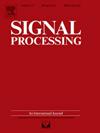MAGNET: Multi-level feature guidance network for few-shot fine-grained image classification
IF 3.4
2区 工程技术
Q2 ENGINEERING, ELECTRICAL & ELECTRONIC
引用次数: 0
Abstract
Few-shot fine-grained image classification aims to distinguish highly similar categories with limited labeled samples. However, existing methods face three limitations. First, they fail to effectively feature according to the characteristics of each layer, overlooking the fine-grained structures in low-level features. Second, they handle high-level features simplistically, lacking the ability to share knowledge across multiple tasks, and they struggle with background redundancy in mid-level features, leading to overfitting. To this end, we propose a Multi-Level Feature Guidance Network (MAGNET), which integrates three core modules. The Primary Information Enhancement Module enhances low-level features by capturing fine-grained structural information and reinforcing them with high-level features. The Wavelet Attention Knowledge Guidance module applies wavelet transform for frequency-domain analysis of high-level features, while a multi-task-related knowledge transfer mechanism improves the model’s ability to share knowledge across tasks, enhancing generalization to new categories. The Background Filtering Module reduces background redundancy in mid-level features using high-level semantic information, mitigating overfitting. Extensive experiments on three benchmark datasets demonstrate that MAGNET outperforms existing methods. The source code is available at https://github.com/naivejph/MAGNET.git.
MAGNET:用于少镜头细粒度图像分类的多级特征引导网络
少镜头细粒度图像分类旨在用有限的标记样本区分高度相似的类别。然而,现有的方法面临三个限制。首先,它们不能有效地根据每一层的特征进行特征,忽略了底层特征中的细粒度结构。其次,它们简单地处理高级特征,缺乏跨多个任务共享知识的能力,并且它们在中级特征的背景冗余中挣扎,导致过拟合。为此,我们提出了一个多级特征引导网络(MAGNET),它集成了三个核心模块。初级信息增强模块通过捕获细粒度的结构信息并使用高级特征对其进行强化来增强低级特征。小波注意知识引导模块采用小波变换对高级特征进行频域分析,多任务相关的知识转移机制提高了模型跨任务知识共享的能力,增强了对新类别的泛化能力。背景过滤模块使用高级语义信息减少了中级特征中的背景冗余,减轻了过拟合。在三个基准数据集上的大量实验表明,MAGNET优于现有方法。源代码可从https://github.com/naivejph/MAGNET.git获得。
本文章由计算机程序翻译,如有差异,请以英文原文为准。
求助全文
约1分钟内获得全文
求助全文
来源期刊

Signal Processing
工程技术-工程:电子与电气
CiteScore
9.20
自引率
9.10%
发文量
309
审稿时长
41 days
期刊介绍:
Signal Processing incorporates all aspects of the theory and practice of signal processing. It features original research work, tutorial and review articles, and accounts of practical developments. It is intended for a rapid dissemination of knowledge and experience to engineers and scientists working in the research, development or practical application of signal processing.
Subject areas covered by the journal include: Signal Theory; Stochastic Processes; Detection and Estimation; Spectral Analysis; Filtering; Signal Processing Systems; Software Developments; Image Processing; Pattern Recognition; Optical Signal Processing; Digital Signal Processing; Multi-dimensional Signal Processing; Communication Signal Processing; Biomedical Signal Processing; Geophysical and Astrophysical Signal Processing; Earth Resources Signal Processing; Acoustic and Vibration Signal Processing; Data Processing; Remote Sensing; Signal Processing Technology; Radar Signal Processing; Sonar Signal Processing; Industrial Applications; New Applications.
 求助内容:
求助内容: 应助结果提醒方式:
应助结果提醒方式:


